The remarkable tale of Man United’s original ‘Wembley of the North’: Tickets for a sixpence, financial scandal and a stinking chemical plant
They arrived by the tens of thousands that Saturday afternoon, wearing caps, ties and extravagant mustaches. Some stood behind the freshly painted white picket fences, others sprawled across the tall turf overlooking the field. And although fans provided the music with accordions, admission was 6d and the fixture was 1d, football’s jealousies and rivalries were as evident then as they are today.
Things were not so personal between the players of United and Liverpool in February 1910. But there was bad blood between the two cities when the teams met at 3.30pm that day, for what was Old Trafford’s inaugural match. The new Manchester Ship Canal, built in 1894, had bypassed Liverpool’s port trade, reducing merchant income and causing job losses. Liverpool’s response included pantomime and music hall jokes about the rival city.
Liverpool would probably also have subscribed to the view prevalent in Britain at the time that United were the ‘moneybag’ team, flaunting their new-found wealth in an unappealing way.
United’s Sir Jim Ratcliffe figure at the time was John Henry Davies, heir to the Manchester Breweries, a United chairman with drive and dash, who spent so much money on the club that the disapproving FA launched an investigation and found the club ‘excessively managed’ became. .’
There was no ten point deduction at the time, but the FA discovered that Davies was receiving £740 rent for 14 acres of land that the club did not even own. United was stigmatized for being “a private monopoly.” They didn’t care as the club had prospered thanks to Davies’ aggressive attitude, his spending and his willingness to open his chequebook.
The first match at Old Trafford took place in 1910, when Manchester United hosted Liverpool
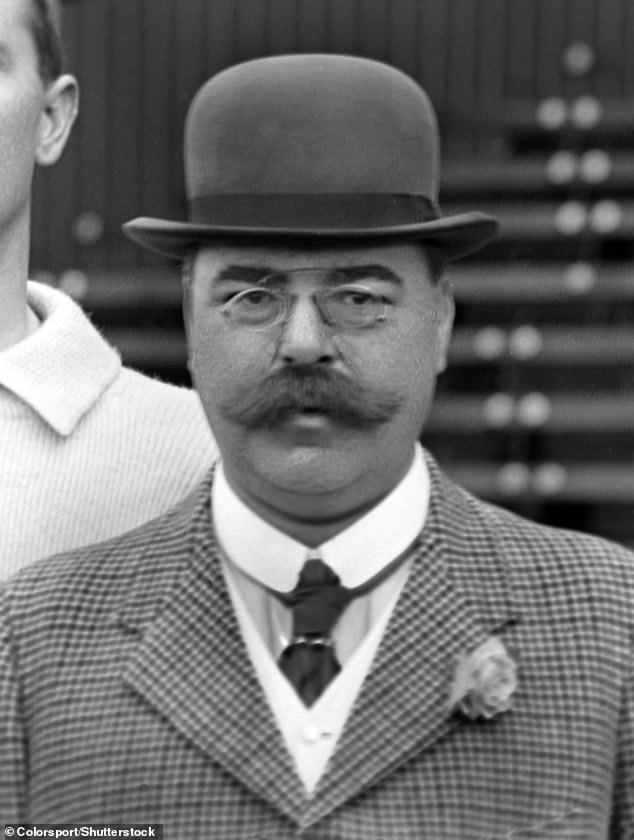
John Henry Davies (pictured), heir to the Manchester Breweries, was the United chairman who spent so much money on the club that the disapproving FA launched an investigation and found the club was ‘excessively managed’.
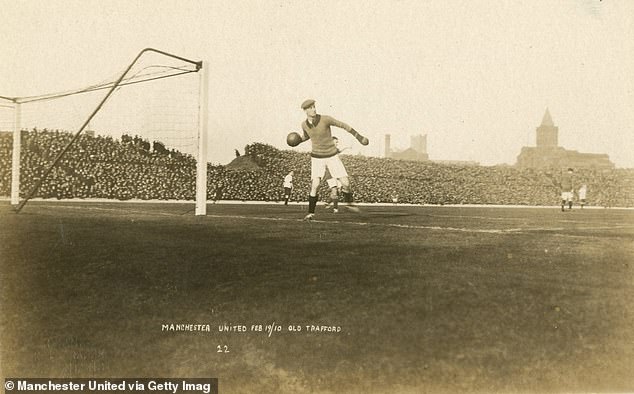
United lost the match 4–3, despite fielding some of the match’s stars, in an entertaining encounter
The innocent-looking person at the bottom of the fixture for the match against Liverpool was the ultimate manifestation of this. He was Billy Meredith, football’s first superstar – an erratic Welsh winger who would probably never have played in United’s red had his previous club Manchester City not, in another vaguely familiar storyline, been accused of illegally violating the rules for financial expenditure.
The FA found City paid him and other stars almost double the maximum £4 per week their rules allowed and hit them with three-year bans. So United coolly bought the best of them at auction. Meredith was playing again by the time Old Trafford was built, flying down the right wing to supply his friend Sandy Turnbull, another City refugee.
These two signings, both starters against Liverpool, had helped United win their first championship title in 1908. This also applied to Harry Moger, the goalkeeper with a flat cap and a vest in the photo, with the brown leather ball in his hand during the Liverpool match. game, against the backdrop of the imposing Kilvert’s Pure Lard building. Moger arrived from Southampton in 1903, one of the first signings of dynamic manager Ernest Mangnall. Centre-back Charlie Roberts – Number 5 on United’s team list against Liverpool, although the jerseys did not bear numbers, was also a crucial £400 signing from Grimsby Town.
In 1910, as now, United wanted to make an old stadium a thing of the past, even if their problems were more toxic than their 2024 home’s leaking roof, cramped corridors and outdated press area. The pitch United played on before Old Trafford was built was to the leeward of thirty smokestacks of a huge chemical factory. It smelled.
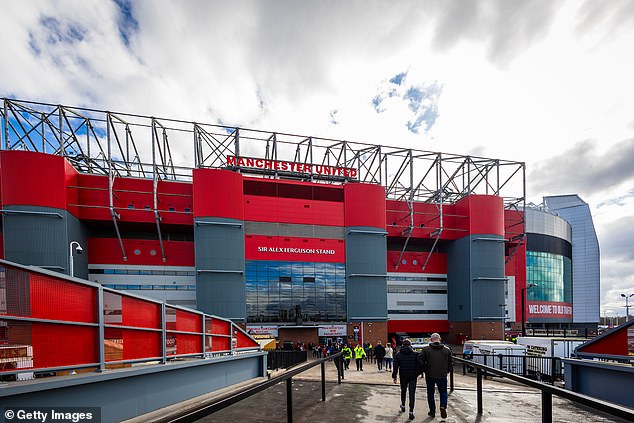
The FA found that Davies received £740 rent for 14 hectares of land that the club did not even own
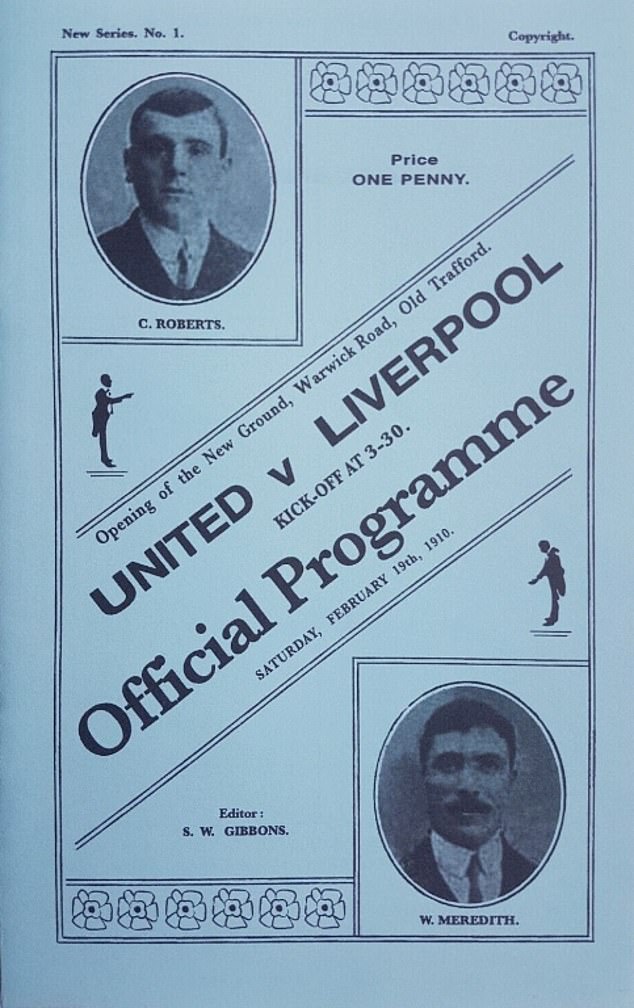
Billy Meredith, pictured at the bottom of the match programme, might not have played for United had his former side, Man City, not been accused of illegally breaking financial expenditure rules
The new stadium, built at a cost of £60,000, brought the modernity and scale that Sir Jim’s dreams of a ‘Stadium for the North’ now evoke. United commissioned the greatest stadium architect, the Scottish engineer Archibald Leitch, who designed Anfield’s main stand in 1906. His Manchester assignment? ‘Create the most beautiful stadium in the North.’
Liverpool’s match program shows that the name ‘Old Trafford’ had not yet been invented on that February day. The thinking at the time was that it would be the ‘Warwick Road Arena’.
It was, in the words of one journalist, ‘a wonder to behold’ with a billiards room, a gymnasium, a massage room and a plunge pool. It had a capacity of 80,000 people with attendants ushering visitors from the tea rooms to theater-like seats priced at five shillings.
The quality of the surface caught the eye of many players when the game started. “It’s like a tennis court,” Meredith later noted in his newspaper column. And Turnbull’s performance suited the occasion. He headed home after the half hour to give United their first goal on what would become such a hallowed pitch, minutes before teammate Thomas Homer sent a ball in just out of reach of Liverpool keeper Sam Hardy for a 2-0 lead during halftime. .
One of the stands of the new stadium had a strange effect, as Meredith also reflected in his column. “It created a strong wind that swirled and swirled around the ends on the ground. The ball was curling and spinning this way and that, and you never knew what it would do next.”
Apologies? Maybe. The newspaper reports describe a ‘disastrous’ United capitulation after half-time, with ‘the Anfielders’, as they were known, scoring four times to win 4–3.
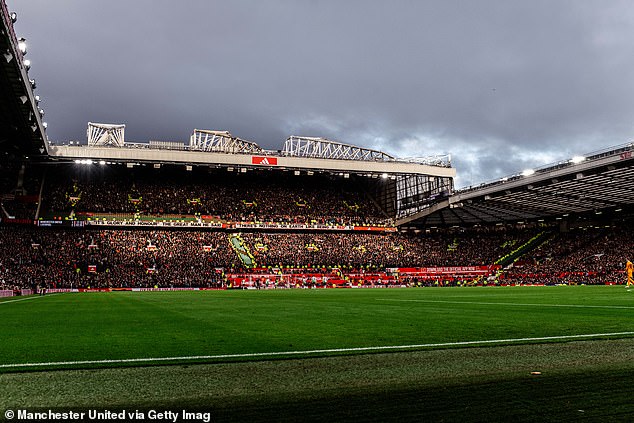
The field will host the same match again on Sunday evening in one of the most important field matches in a long time
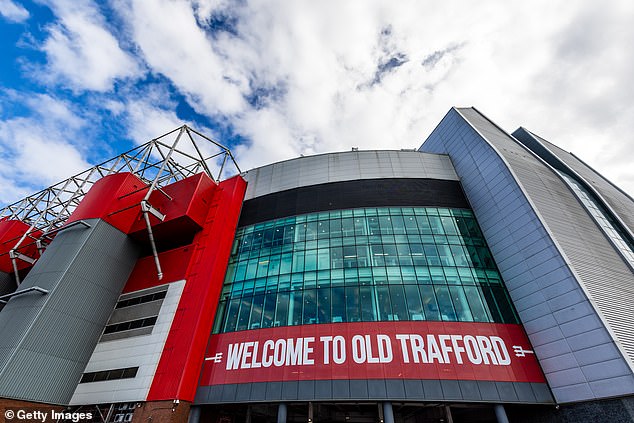
United could be in the bottom line after taking over from Sir Jim Ratcliffe
Liverpool’s big goalscorer Arthur Goddard, signed from Stockport County for £260, pulled a goal back. Then Charlie Roberts’ struggle to cope with Liverpool striker Jack Parkinson – a railway worker, who at the time had yet to turn professional – saw the visitors score three goals in the last 20 minutes to win. Moger was guilty of at least one of them. Liverpool’s Goddard and Jimmy Stewart, a Scottish inside forward, both scored twice. Turnbull cut heavily into his mouth as he pushed for an equalizer towards the end.
The defeat proved that there are no guarantees in football, even when the wealth flows in and a new stadium is built. It was a temporary dip for United, who went a year without losing at the stadium that became Old Trafford. Villa took the title in May 1910, with Liverpool second, but the following season it was United’s. Old Trafford became a prototype stadium for the North, hosting an FA Cup and internationals.
Yet Sandy Turnbull’s wonderful talents were all too quickly eradicated. He died in Arras in 1917. Too old to serve during the First World War, Meredith was haunted to the end of his days by the loss of his old friend. His own best days were behind him. After 1911, it would be forty years before the championship trophy returned to Old Trafford.
United basked in their glorious arena for as long as they could. Reporting on the match against Liverpool, the Sporting Chronicle reporter declared that this was ‘the most beautiful and spacious arena – unparalleled anywhere in the world’. Exactly the reaction Sir Jim Ratcliffe expects for a new United ground in a few years’ time.
